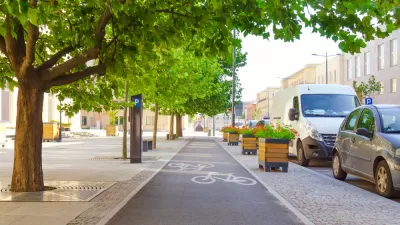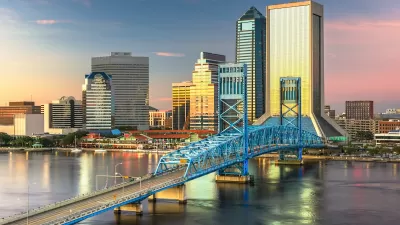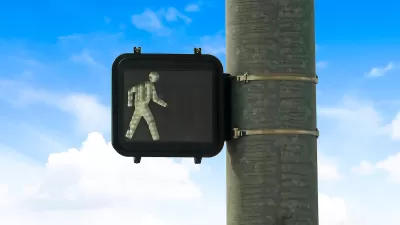While other countries are seeing fewer road deaths, traffic violence in the United States is back on the rise.

The rate of Americans dying in traffic crashes far outpaces that of most other developed nations, reports David Zipper for Bloomberg CityLab, begging the question: why?
While many Americans attribute the higher rate of road deaths to our reliance on cars, Zipper argues that, based on his extensive research on the topic, “The closer you look, the clearer it becomes that the US traffic safety crisis is not a reflection of geography or culture,” but rather of conscious policy decisions that privilege fast car travel and carmakers over road safety and multimodal transportation.
According to Zipper, this phenomenon took off more recently. In the 1970s and 1980s, the United States could claim to be a leader in road safety as innovations such as seatbelts and airbags became mandatory. “But in the last 30 years, the US has not kept pace with tumbling traffic death rates in Europe, east Asia and Canada. In 2021, as the US hit a 16-year high for fatalities, Japan and Norway posted the lowest number of road deaths since the 1940s.” Pedestrian death rates in the United States rose at even more alarming rates.
Zipper attributes this to a variety of factors, including the rise of car-free and ‘car-light’ zones in European cities, as well as the use of automatic traffic cameras and other safety improvements like road diets and roundabouts. Regulations on vehicle design play a role, too: “The European Union added pedestrian safety tests to NCAP crash ratings over two decades ago, and Japan, China and Australia now conduct them as well. The US still does not.” Other factors include comparatively low fuel taxes in the United States, land use patterns that encourage driving, and poorly resourced public transit systems.
Zipper suggests that the easiest solutions are the simplest. There’s no need to wait for technology to save us. Proven, analog tools for slowing traffic and prioritizing pedestrian safety already exist.
FULL STORY: US Traffic Safety Is Getting Worse, While Other Countries Improve

Americans May Be Stuck — But Why?
Americans are moving a lot less than they once did, and that is a problem. While Yoni Applebaum, in his highly-publicized article Stuck, gets the reasons badly wrong, it's still important to ask: why are we moving so much less than before?

Using Old Oil and Gas Wells for Green Energy Storage
Penn State researchers have found that repurposing abandoned oil and gas wells for geothermal-assisted compressed-air energy storage can boost efficiency, reduce environmental risks, and support clean energy and job transitions.

Placekeeping: Setting a New Precedent for City Planners
How a preservation-based approach to redevelopment and urban design can prevent displacement and honor legacy communities.

San Francisco’s Muni Ridership Grew in 2024
The system saw its highest ridership since before the Covid-19 pandemic, but faces a severe budget shortage in the coming year.

Colorado Lawmakers Move to Protect BRT Funding
In the face of potential federal funding cuts, CDOT leaders reasserted their commitment to planned bus rapid transit projects.

Safe Streets Funding in Jeopardy
The Trump administration is specifically targeting bike infrastructure and other road safety projects in its funding cuts.
Urban Design for Planners 1: Software Tools
This six-course series explores essential urban design concepts using open source software and equips planners with the tools they need to participate fully in the urban design process.
Planning for Universal Design
Learn the tools for implementing Universal Design in planning regulations.
Heyer Gruel & Associates PA
City of Moreno Valley
Institute for Housing and Urban Development Studies (IHS)
City of Grandview
Harvard GSD Executive Education
Salt Lake City
NYU Wagner Graduate School of Public Service
City of Cambridge, Maryland





























